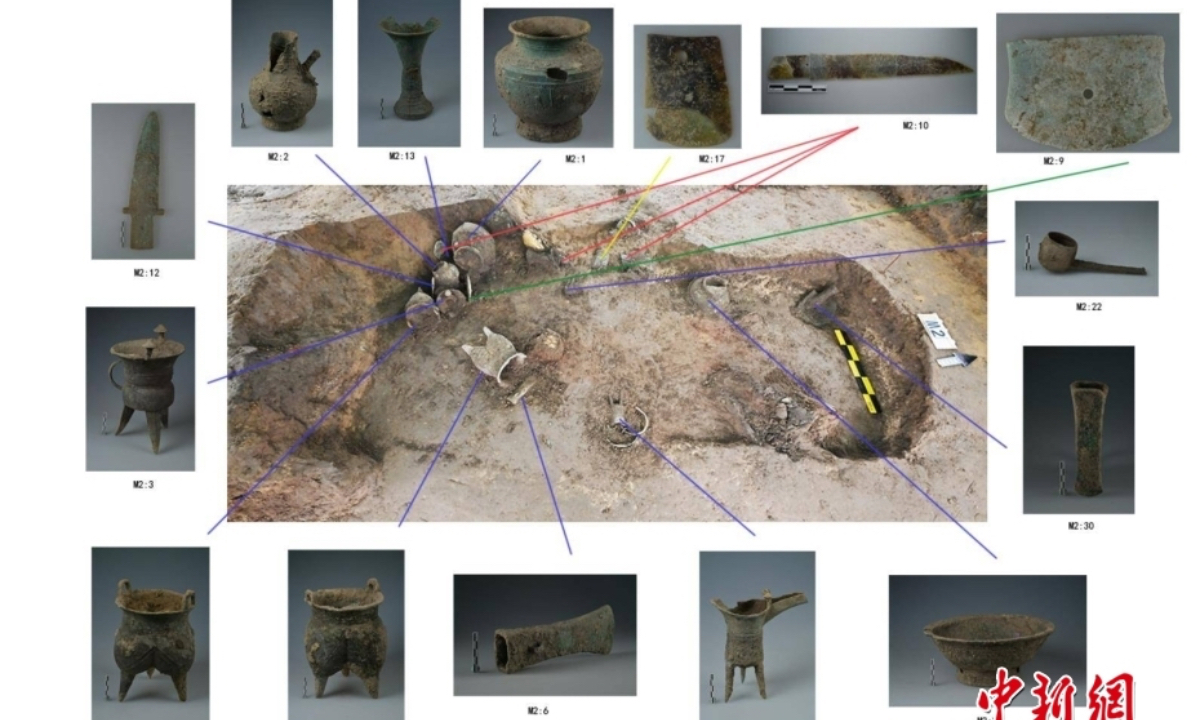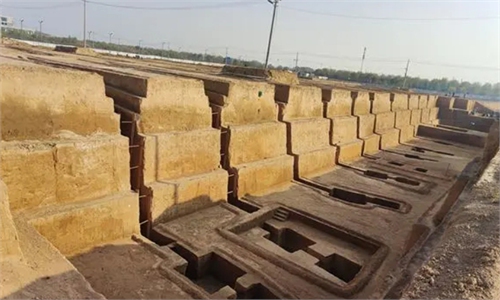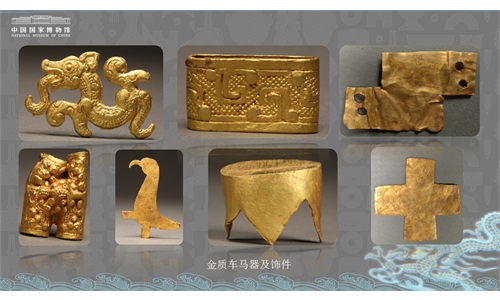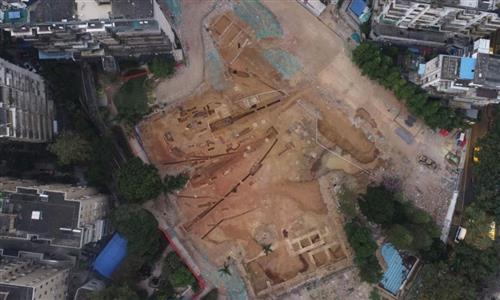ARTS / CULTURE & LEISURE
Excavation of China’s earliest known noble tomb complex comes to a close, revealing evidence related to the Yinxu ruins

Photo: China News Service
The discovery has provided evidence supporting the parallel square noble domains found in the Yinxu noble tombs, the first site of a capital in Chinese history, furthering the exploration of ancient Chinese burial origins and of noble mausoleum system evolution.
The Shuyuan Street Cemetery, is a high-ranking noble burial ground from the middle period of the Shang Dynasty (1600-1046 B.C.), spans an expansive 20,000 square meters, including a labyrinth of tunnels, graves, and sacrificial remains dating back approximately 3,400 years.
The site, featuring a closed drainage ditch, 20 burial mounds centered around a main tomb, and 15 sacrificial remnants, holds a particular significance for its direct evidence supporting the parallel square domains found in the Yinxu noble tombs.
The drainage ditch, with a length of about 240 meters from east to west and a width of 130 meters from north to south, is the earliest discovered high-level "Zhaoyu" in China, showcasing a clear rectangular structure and well-defined functions.
This discovery, according to Huang Fucheng, a researcher with the Zhengzhou Municipal Institute of Cultural Heritage and Archaeology, offers critical insights into the origins of ancient Chinese "Zhaoyu" (high-profile tombs) systems and the evolution of the mausoleum system.
The excavation unearthed more than 200 artifacts, including a shell-shaped gold "funeral mask," turquoise, bronze, and jade wares. These items not only symbolize the status of the tomb's occupant but also provide a connection to the characteristics of ancient civilization, according to Huang.
The Shuyuan Street Cemetery, which predates the Yinxu noble tombs by nearly 200 years, showcases a continuity of rituals and customs from the early to middle and late periods of the Shang Dynasty.
The site's proximity to the Yinxu noble tombs suggests it may be the origin of the western and northwestern square "Zhaoyu" domains, Huang said.
Global Times



